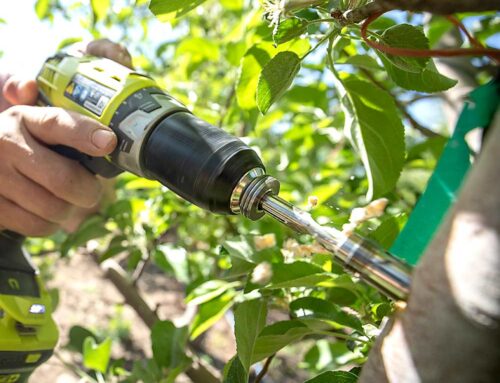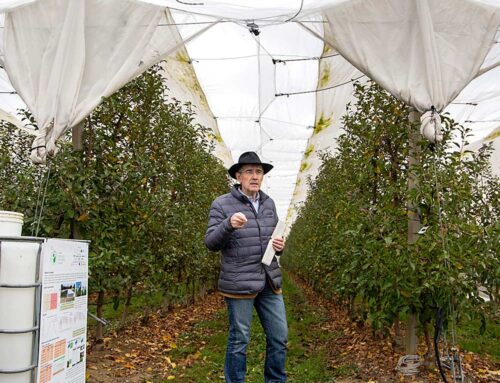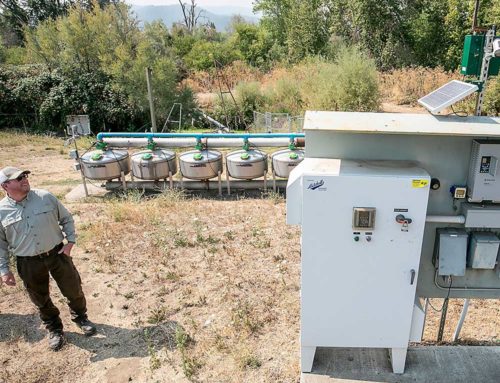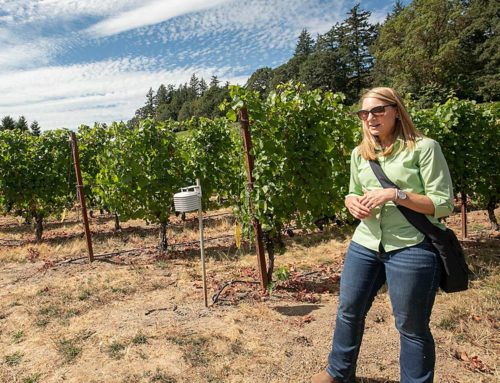
Lynn Long Oregon State University
It’s important that cherry growers have a good irrigation plan to avoid stressing the trees and negatively impacting fruit quality, Lynn Long, Oregon State University Cooperative Extension agent, said during the British Columbia Hort Forum. Cherries are particularly sensitive to water shortages during their third stage of development.
The first stage is the cell division phase, the second is around pit hardening, and the third is the cell enlargement phase, just before harvest. “It’s critical during the stage three period that you have adequate soil moisture,” Long said. “If not, and you get heat stress, you can affect the quality of your cherries.” Growers need to know the evapotranspiration rate of the trees, and the soil moisture content, he said.
He urged growers to keep their soil monitoring programs simple. “One of the problems some growers have is they get too complicated,” he said, noting that some growers he works with have tried using tensiometers. “As it gets close to harvest, they abandon it because it’s too time consuming, and they go back to their calendar method of irrigation.
I encourage our growers to hire an irrigation consultant to evaluate the soil moisture content.” The consultant will advise the grower how and when to water, and also make sure that the irrigation system can meet the demands of the trees.
Cooling
Long said Tim Smith, Washington State University Cooperative Extension educator for north central Washington, has recommended cooling cherry trees postharvest in order to moderate the temperature during bud differentiation in the summer and reduce the amount of cherry doubling in the following year’s crop. He said Smith believes 38°C (100°F) is the critical temperature for doubling.
By running the sprinkler system when the temperature reached 35°C (95°F), he was able to keep the temperature below the critical level. “If you take this idea in a preharvest setting, you might be able to reduce stress in your trees using the same concept,” Long said.
Assuming that the fruit will be stressed when temperatures exceed 32°C (90°F), they could start irrigating at that temperature threshold, using a microsprinkler system, and potentially keep the orchard at a lower temperature than ambient air temperature. However, after a time, the grower would need to be concerned about root asphyxiation, as cherry trees don’t like wet feet. Also, in a more humid environment, powdery mildew could become a problem.
Mulches
Water can be conserved in the soil with mulches. In Australia, growers are using organic mulches, such as straw, Long reported. A mulch helps increase organic matter in the soil, though it can lead to more problems with rodents, he warned.
It’s also important to select the appropriate training system for the variety and rootstock. “I don’t think one training system fits all,” Long said. “Don’t use central leader for Skeena because it’s particularly sensitive to heat stress.” The central leader provides higher light penetration, which is good unless the variety is susceptible to heat stress.
A better system for heat-sensitive varieties is Spanish Bush. Spanish Bush provides for a true pedestrian orchard, he said. The fruit is within eight feet of the ground, which makes it easy to harvest and maintain the trees. It also provides some protection from the sun and heat stress.
The steep leader used in Washington State and Oregon for trees on full-size rootstocks is also more likely to protect the fruit from heat stress than the central leader system. Long has a publication describing the various cherry tree training systems. It can be downloaded on the Internet at http://eesc.orst.edu/agcomwebfile/edmat/PNW543.pdf.
Postharvest
Cherries need to be protected from the sun after harvest, also. “You can grow the best cherries in the world, but if you do not take care of those cherries after harvest, you’re going to deliver an inferior product,” Long said.
The grower should install shades at the loading docks, and bins should be covered with reflective tarps to stop the temperature of the fruit in the bins from increasing. Even if uncovered bins are kept under the shade of a tree, the temperature of the fruit rises and it loses humidity.
Preventing temperature increases and moisture loss helps to prevent the cherry stems from browning, Long said. Research has shown that covering the bins with tarps helps prevent stem browning even when the cherries are hydrocooled.






Leave A Comment